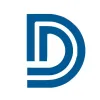Take a look inside 5 images
Defined Learning
Pros: The performance tasks are extremely thorough, result in student products, and cover key concepts in science and math.
Cons: Individualized student progress tracking and remediation tools are lacking.
Bottom Line: Excellent, well-thought-out resources for developing problem-solving skills in the classroom.
Teachers can use Defined Learning to supplement their science and math curricula. They can assign all or part of the tasks in the unit folders, making assignments customizable to the needs of the class. Since most of the tasks involve real-world applications of concepts, they also can be used as enrichment activities for advanced students. Or,show the videos as a way to hook kids when first introducing a topic.
Defined Learning has performance tasks, literacy tasks, and other resources for kids in grades K through 12, although the literacy tasks begin at grade 3. Many resources are aligned with Common Core Math, Common Core ELA, and Next Generation Science Standards. However, considering that this is a STEM resource, the science alignment is on the weak side.
Resources are organized by grade band, task type (performance, career, or literacy), and unit topics. There's also a chart that allows users to search by standard. Teachers can use the Task Center to organize and customize tasks and rubrics. A teacher dashboard exists, but its function is not entirely clear, and the links to professional development modules were not working at the time of this review.
Performance tasks, which are often difficult to develop, are at the heart of Defined Learning and are an excellent way for kids to use critical-thinking and problem-solving skills. Concepts are presented in real-world situations, challenging kids to apply their knowledge in unique ways. Connecting the performance tasks to careers is a clever way to give more meaning to science and math and inspire kids to learn. The literacy tasks empower kids to use reading and writing skills while learning about science, math, history, and more.
Defined Learning is an innovative resource that brings together important elements of STEM education. The focus of content is science and math. However, there are strong connections to engineering and technology, and most tasks require kids to read and evaluate informational texts. Rubrics are provided, although most are generic to a certain subject area or skill. However, users can customize any rubric to better align with specific tasks or assignments.















